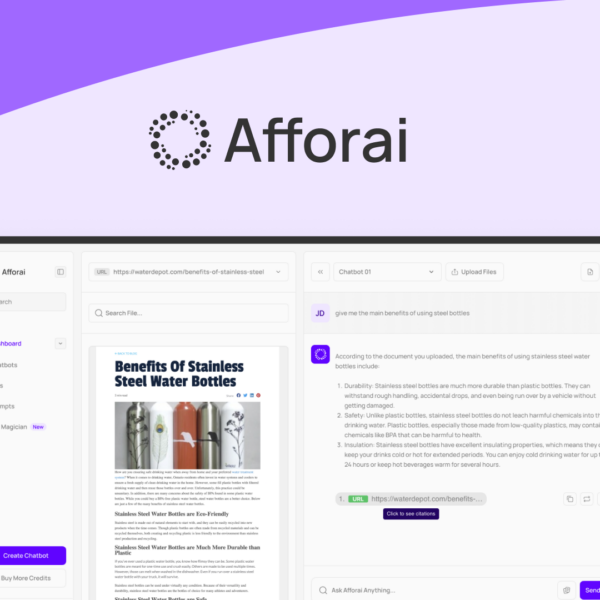CRM ads leverage customer data to deliver targeted, personalized advertising campaigns that enhance engagement and drive conversions. By implementing best practices such as audience segmentation, A/B testing, and data management, businesses can significantly improve their marketing effectiveness and ROI.
In the digital marketing world, CRM ads have emerged as a game changer. These targeted advertisements can revolutionize the way you connect with your audience. By marrying customer relationship management (CRM) with advertising, you can tailor your marketing strategies to meet the specific preferences and behaviors of your consumers. In this article, we’ll delve into the nuances of CRM ads, exploring their distinct advantages, campaign crafting, and methods for measuring success.
Understanding CRM Ads
Understanding CRM Ads is essential for modern marketers. Customer relationship management (CRM) ads blend marketing strategies with customer insights. This approach allows businesses to target their advertisements based on data collected from customers, enabling more personalized and effective campaigns.
CRM ads work by leveraging information such as purchase history, preferences, and customer interactions. By understanding these factors, companies can create ads that resonate with individual consumers. For instance, if a customer frequently buys sports equipment, they are more likely to respond to ads promoting new athletic gear.
How CRM Ads Enhance Customer Engagement
The primary goal of CRM ads is to engage customers on a deeper level. By utilizing targeted messaging, brands can foster a sense of connection and loyalty. Furthermore, personalized ads can lead to higher conversion rates since they speak directly to the customer’s interests.
Data-Driven Decision Making
Another critical aspect of CRM ads is data utilization. This data-driven approach allows businesses to track the effectiveness of their ads and adjust strategies as needed. Metrics such as click-through rates, conversion rates, and customer feedback can provide insights into what works and what doesn’t.
Incorporating CRM ads into your marketing plan not only helps in reaching the right audience but also supports overall business growth by building stronger relationships with customers.
The Benefits of CRM Ads for Your Business

The Benefits of CRM Ads for Your Business are numerous and impactful. These ads focus on individual customer preferences and behaviors, which can improve your marketing effectiveness significantly. By tailoring ads to specific audiences, businesses can increase engagement and drive conversions more efficiently.
One of the most significant advantages of CRM ads is the enhanced customer targeting. Since these advertisements are based on data collected through CRM systems, they reach customers who are most likely to be interested in your products or services. This reduces wasted spend on ads that do not convert.
Improved Customer Retention
CRM ads can foster better customer relationships. By sending personalized messages that resonate with customers’ needs, businesses can improve customer loyalty. When customers feel valued and understood, they are more likely to return for repeat purchases.
Higher Conversion Rates
Another benefit is the potential for higher conversion rates. Personalized marketing messages often result in better responses from customers. When people receive adverts that speak directly to their interests, they are more inclined to take action, such as making a purchase or signing up for a newsletter.
Additionally, CRM ads can decrease the cost of customer acquisition. Targeting specific audiences who are more likely to convert means spending less on marketing while achieving better results. As a result, the return on investment (ROI) from advertising campaigns can significantly improve.
Data-Driven Insights
Lastly, using CRM ads allows businesses to gather valuable data-driven insights. Analytics from CRM systems can show what types of ads perform best, enabling marketers to refine their strategies continuously. Understanding what works leads to better future campaigns and more efficient spending.
Crafting Effective CRM Ad Campaigns
Crafting Effective CRM Ad Campaigns is crucial for maximizing the impact of your marketing efforts. These campaigns should be strategic and data-driven to ensure they resonate with your target audience. Here are some essential steps and tips to create effective CRM ad campaigns.
First, it is vital to define your target audience clearly. Utilize the data from your CRM system to segment your audience based on their behavior, preferences, and demographics. By understanding who your audience is, you can design ads that speak directly to their interests and needs.
Personalization is Key
Next, ensure that your ads are personalized. Tailor the messaging and visuals to fit the preferences of your audience segments. For instance, use their names in the ad copy and suggest products based on their past purchases. A personalized approach can significantly increase engagement and conversion rates.
Set Clear Goals
It’s also essential to set clear goals for your campaigns. Whether you aim to increase brand awareness, drive website traffic, or boost sales, having specific objectives will help guide the entire campaign process. Make sure you define measurable outcomes so you can assess the effectiveness of your ads.
Testing and Optimization
Testing different ad variations can lead to valuable insights. Use A/B testing to compare different messages, designs, or calls to action. Through testing, you can identify what performs best and optimize your campaigns accordingly. Continuous improvement is vital in a dynamic advertising landscape.
Finally, track data and analyze results regularly. Utilizing tools available in your CRM system allows you to monitor performance metrics such as click-through rates, conversion rates, and engagement levels. This data helps refine future campaigns and allocates your advertising budget strategically.
Measuring Success with CRM Ads

Measuring Success with CRM Ads is an essential practice for optimizing your advertising strategies. To determine the effectiveness of your CRM ad campaigns, you need to track specific metrics and analyze the results. This approach helps understand how well your ads perform, adjust tactics, and improve overall outcomes.
First, identify your key performance indicators (KPIs). Common KPIs for CRM ads include click-through rates (CTR), conversion rates, customer acquisition costs, and return on investment (ROI). These metrics provide insights into how effectively your ads engage customers and drive actions.
Click-Through Rate (CTR)
The click-through rate (CTR) is a crucial metric that indicates the percentage of viewers who click on your ad. A higher CTR suggests that your ad content resonates with your audience. If the CTR is low, it may indicate that your messaging or targeting needs adjustment.
Conversion Rate
Next, focus on the conversion rate, which measures how many people complete the desired action after clicking the ad. This could be making a purchase, signing up for a newsletter, or filling out a contact form. Monitoring this metric helps you evaluate the effectiveness of your ad in driving customer actions.
Customer Acquisition Cost (CAC)
Another essential metric is customer acquisition cost (CAC). This figure represents how much you spend to acquire a new customer through your CRM ads. To calculate CAC, divide the total cost of your ad campaign by the number of new customers gained. Keeping CAC low while generating quality leads is crucial for profitability.
Return on Investment (ROI)
Finally, assess your return on investment (ROI) to evaluate the overall success of your CRM ads. ROI can be calculated by comparing the revenue generated from the ads to the total cost of running those ads. A positive ROI indicates a successful campaign, while a negative ROI suggests a need for re-evaluation.
Regularly measuring these metrics is vital. Use your CRM tools to gather data and analyze trends over time. This ongoing analysis will help refine your ad campaigns, improve performance, and foster better customer relationships.
Best Practices for Implementing CRM Ads
Best Practices for Implementing CRM Ads can significantly enhance the effectiveness of your advertising efforts. By following certain strategies, you can maximize the return on your investment and better connect with your audience. Here are key practices to consider.
First, ensure accurate data management. A successful CRM ad campaign relies on high-quality, clean data. Regularly update and maintain your customer database to ensure that information such as contact details, preferences, and past interactions are current. This accuracy allows you to target the correct audience and tailor your messaging.
Segmentation is Essential
Next, implement audience segmentation. Divide your customer base into smaller groups based on common characteristics like buying behavior, demographics, or interests. By tailoring your ads to these specific segments, you can create more relatable and engaging messages that appeal directly to your customers’ needs.
Utilize A/B Testing
Using A/B testing can help refine your ads for better performance. Create different versions of your ads to see which ones resonate more with your audience. Test various elements, including headlines, images, and calls to action. Analyzing the results will provide insights into what works best, allowing you to optimize future campaigns.
Track and Analyze Metrics
Regularly track and analyze your metrics. Keep an eye on key performance indicators like CTR, conversion rates, and engagement levels. Use the data from your CRM system to monitor how well your ads are performing. This ongoing analysis will enable you to make informed adjustments to improve your ads over time.
Focus on Customer Feedback
Additionally, prioritize customer feedback. Listen to what your customers say about your ads and your products. Feedback can provide valuable insights into how your advertisements are perceived and guide modifications to enhance their effectiveness. Engage with customers through surveys or social media to gather their opinions.
Lastly, ensure your CRM ads align with your overall marketing strategy. Consistency in branding and messaging across all channels strengthens brand recognition and builds customer trust. By following these best practices, you can optimize your CRM ad campaigns and drive better results.
In Summary: Unlocking the Power of CRM Ads
CRM ads have proven to be a game changer for businesses looking to enhance their marketing strategies. By using customer data effectively, companies can create personalized and targeted campaigns that resonate with their audience.
Implementing best practices, such as segmentation and A/B testing, will ensure your ads perform at their best. Regularly tracking metrics can guide adjustments to improve outcomes and connect better with customers.
Overall, incorporating CRM ads into your marketing efforts can lead to increased engagement, higher conversion rates, and overall business growth. Don’t miss the opportunity to elevate your marketing strategy with CRM ads.
FAQ – Frequently Asked Questions about CRM Ads
What are CRM ads?
CRM ads are advertisements tailored using customer data collected through Customer Relationship Management systems, targeting specific audiences to increase engagement.
How can I effectively measure the success of my CRM ads?
To measure success, focus on key performance indicators like click-through rates, conversion rates, and customer acquisition costs, analyzing them regularly.
Why is audience segmentation important for CRM ads?
Audience segmentation allows you to create targeted messages for different groups, which can improve engagement and conversion rates significantly.
What role does A/B testing play in CRM ads?
A/B testing helps you compare different versions of your ads to see which performs better, allowing for optimization based on real customer preferences.
How can I ensure I have quality data for my CRM ads?
Regularly clean and update your customer database to ensure that contact information and preferences are accurate, enabling effective ad targeting.
What are some best practices for implementing CRM ads?
Best practices include maintaining accurate data, segmenting your audience, personalizing messages, testing ad variations, and analyzing performance metrics.




